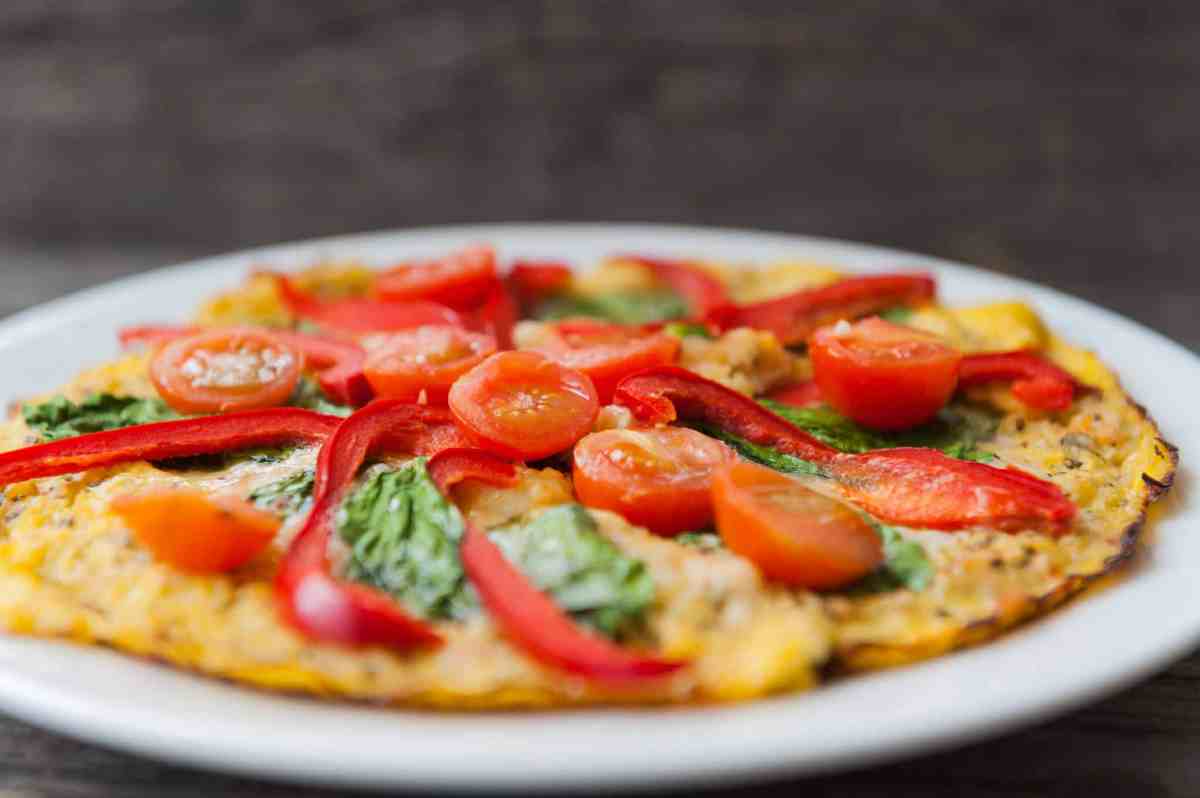Craving delicious, healthy meals without sacrificing flavor or your waistline? Imagine vibrant plates bursting with fresh, seasonal ingredients, each bite a symphony of textures and tastes. This exploration into low-calorie flexitarian dinners unveils a world of culinary possibilities, proving that healthy eating can be both satisfying and incredibly enjoyable. We’ll guide you through quick, easy recipes, budget-friendly options, and protein-packed delights, all while celebrating the versatility of flexitarian cuisine.
From quick weeknight meals ready in under 30 minutes to thoughtfully crafted dishes showcasing seasonal produce, we’ll empower you to create meals that are not only healthy but also exciting and visually appealing. Learn clever techniques to maximize flavor without relying on excessive calories, and discover the nutritional benefits of various protein sources. This isn’t just about eating less; it’s about eating better, savoring each mouthful, and feeling energized throughout your day.
Flavorful Low-Calorie Flexitarian Dinner Ideas Using Seasonal Produce
Savoring the bounty of seasonal produce is a delicious way to create vibrant, low-calorie, and flexitarian-friendly dinners. Seasonal vegetables and fruits are not only at their peak flavor but also offer the highest nutritional value. By incorporating them strategically, we can craft satisfying meals that are both healthy and exciting. This section will explore three such recipes, highlighting the unique benefits of seasonal ingredients and offering tips for maximizing their flavor.
Summer Squash and Corn Fritters with Lemon-Dill Yogurt
Summer is the perfect time to utilize the abundance of zucchini, yellow squash, and sweet corn. These ingredients provide a light and refreshing base for these fritters. The lemon-dill yogurt dip adds a tangy counterpoint, cutting through the sweetness of the corn and enhancing the overall flavor profile. Roasting the vegetables before adding them to the fritter batter intensifies their natural sweetness and concentrates their flavor.
- Ingredients: 1 medium zucchini, grated; 1 medium yellow squash, grated; 1 cup fresh corn kernels; ½ cup whole wheat flour; 1 egg (or flax egg for vegan option); 2 tbsp chopped fresh dill; 1 tbsp lemon zest; salt and pepper to taste; plain nonfat Greek yogurt; fresh dill sprigs for garnish.
- Instructions: Preheat oven to 400°F (200°C). Toss zucchini, yellow squash, and corn with a drizzle of olive oil, salt, and pepper. Roast for 15-20 minutes, until slightly tender. In a bowl, combine roasted vegetables, flour, egg (or flax egg), dill, and lemon zest. Season with salt and pepper. Heat a lightly oiled griddle or pan over medium heat. Drop spoonfuls of batter onto the hot surface and cook for 2-3 minutes per side, until golden brown. Serve with a dollop of plain nonfat Greek yogurt mixed with fresh dill.
Roasted Butternut Squash and Apple Salad with Maple-Dijon Vinaigrette
Autumn brings the rich, earthy flavors of butternut squash and apples. Roasting the squash intensifies its sweetness and creates a beautiful caramelization, complementing the crispness of the apples. The maple-dijon vinaigrette adds a touch of sweetness and tang, balancing the overall flavor profile. This salad is packed with fiber and vitamins, making it a nutritious and satisfying meal.
- Ingredients: 1 medium butternut squash, peeled, seeded, and cubed; 1 apple (Honeycrisp or Fuji recommended), cored and chopped; ½ cup mixed greens; ¼ cup crumbled goat cheese (optional); 2 tbsp maple syrup; 1 tbsp Dijon mustard; 1 tbsp apple cider vinegar; 1 tbsp olive oil; salt and pepper to taste.
- Instructions: Preheat oven to 400°F (200°C). Toss butternut squash with olive oil, salt, and pepper. Roast for 20-25 minutes, until tender and slightly caramelized. In a small bowl, whisk together maple syrup, Dijon mustard, apple cider vinegar, olive oil, salt, and pepper. Combine roasted butternut squash, chopped apple, and mixed greens in a large bowl. Drizzle with maple-dijon vinaigrette and toss gently. Top with crumbled goat cheese (optional) before serving.
Winter Citrus and Kale Salad with Toasted Walnuts
Winter provides a wealth of citrus fruits like oranges, grapefruits, and mandarins. Their bright, acidic flavors contrast beautifully with the slightly bitter kale. Toasted walnuts add a satisfying crunch and healthy fats. Massaging the kale before adding the dressing helps to tenderize the leaves and enhances their flavor. This salad is light yet filling, providing a vibrant and healthy winter meal.
- Ingredients: 5 oz kale, chopped; ½ orange, segmented; ½ grapefruit, segmented; ¼ cup mandarin orange segments; ¼ cup toasted walnuts; 2 tbsp olive oil; 1 tbsp lemon juice; 1 tsp honey; salt and pepper to taste.
- Instructions: Massage chopped kale with olive oil for 2-3 minutes until slightly softened. In a small bowl, whisk together lemon juice, honey, salt, and pepper. Combine massaged kale, orange segments, grapefruit segments, mandarin orange segments, and toasted walnuts in a large bowl. Drizzle with lemon-honey dressing and toss gently.
Satisfying Low-Calorie Flexitarian Dinners with High Protein
Flexitarian diets offer a delicious and healthy way to incorporate more plant-based meals while still enjoying the benefits of animal protein. These recipes focus on creating satisfying, high-protein dinners that are also low in calories, perfect for those watching their weight or seeking a healthier lifestyle. Each recipe provides at least 25 grams of protein per serving, ensuring you feel full and energized throughout the evening.
High-Protein Flexitarian Dinner Recipes
Five delicious and nutritious flexitarian dinner recipes, each boasting at least 25 grams of protein per serving, are detailed below. The recipes showcase diverse protein sources, highlighting their unique nutritional benefits and flavor profiles. Careful attention has been paid to ensuring that the inclusion of protein does not significantly increase the overall calorie count.
| Recipe Name | Protein Source | Calorie Count (per serving) | Step-by-Step Instructions |
|---|---|---|---|
| Lentil Shepherd’s Pie with Sweet Potato Topping | 1 cup green lentils (approx. 18g protein) + 1/2 cup crumbled feta cheese (approx. 7g protein) | Approximately 350 calories | 1. Sauté diced onions, carrots, and celery. 2. Add lentils, vegetable broth, and herbs (thyme, rosemary). Simmer until lentils are tender. 3. Layer the lentil mixture in an oven-safe dish. 4. Top with mashed sweet potatoes. 5. Bake until heated through and topping is lightly browned. |
| Quinoa and Black Bean Burrito Bowls | 1 cup cooked quinoa (approx. 8g protein) + 1 cup black beans (approx. 15g protein) + 1/4 cup Greek yogurt (approx. 2g protein) | Approximately 400 calories | 1. Cook quinoa according to package directions. 2. Heat black beans. 3. Prepare your favorite burrito bowl toppings (salsa, avocado, corn, etc.). 4. Layer quinoa, black beans, and toppings in a bowl. 5. Drizzle with Greek yogurt. |
| Tofu and Vegetable Stir-Fry with Peanut Sauce | 8oz firm or extra-firm tofu (approx. 20g protein) | Approximately 380 calories | 1. Press tofu to remove excess water. 2. Cut tofu into cubes and pan-fry or bake until golden brown. 3. Stir-fry your favorite vegetables (broccoli, peppers, carrots, snap peas). 4. Add the cooked tofu to the vegetables. 5. Toss with a homemade peanut sauce (peanut butter, soy sauce, lime juice, honey/maple syrup). |
| Chickpea and Spinach Curry with Brown Rice | 1 cup chickpeas (approx. 15g protein) | Approximately 320 calories | 1. Sauté onions and garlic. 2. Add chickpeas, spinach, curry powder, and coconut milk. 3. Simmer until spinach is wilted and sauce has thickened. 4. Serve over brown rice. |
| Salmon with Roasted Asparagus and Quinoa | 4oz salmon fillet (approx. 25g protein) | Approximately 450 calories | 1. Preheat oven to 400°F (200°C). 2. Toss asparagus with olive oil, salt, and pepper. 3. Roast asparagus for 15-20 minutes. 4. Season salmon fillet with salt, pepper, and lemon juice. 5. Bake or pan-fry salmon until cooked through. 6. Serve salmon with roasted asparagus and cooked quinoa. |
Comparison of Protein Sources
The recipes above utilize a variety of protein sources, each offering a unique nutritional profile and culinary experience. Lentils provide a substantial amount of plant-based protein, fiber, and iron. Their earthy flavor complements root vegetables beautifully. Black beans offer a similar nutritional profile, with a slightly sweeter and creamier texture. Tofu, a versatile soy-based protein, boasts a mild flavor that readily absorbs the flavors of marinades and sauces. Chickpeas, another excellent legume, offer a slightly nutty taste and firm texture. Finally, salmon provides a rich source of high-quality protein, omega-3 fatty acids, and vitamin D. Its delicate flavor and flaky texture make it a versatile and satisfying protein choice. Incorporating these proteins into low-calorie recipes requires careful portion control and mindful selection of complementary ingredients to maintain a balanced nutritional profile without exceeding the desired calorie range. For example, using lean protein sources and incorporating plenty of vegetables helps to keep the overall calorie count low while maintaining a high protein content.
Budget-Friendly Low-Calorie Flexitarian Dinner Options

Eating healthy doesn’t have to break the bank. Delicious, low-calorie flexitarian dinners can be prepared on a budget, utilizing seasonal produce and smart shopping strategies. These recipes focus on maximizing flavor and nutrition while minimizing cost, proving that healthy eating is accessible to everyone.
Affordable Low-Calorie Flexitarian Dinner Recipes
The following recipes provide a detailed breakdown of ingredient costs and total cost per serving, based on average grocery store prices. Remember that prices may vary depending on location and seasonality. Adjust quantities to suit your needs.
- Lentil Soup with Roasted Vegetables: A hearty and flavorful soup packed with protein and fiber. Imagine a vibrant, rustic bowl brimming with tender lentils, earthy carrots, sweet potatoes, and fragrant onions, all simmered in a rich vegetable broth. The roasted vegetables add a depth of flavor that elevates this simple soup to a culinary masterpiece.
- Ingredients: 1 cup brown or green lentils (approx. $1), 1 large onion (approx. $0.50), 2 carrots (approx. $0.75), 1 sweet potato (approx. $1), 4 cups vegetable broth (approx. $1), 1 tbsp olive oil (approx. $0.25), herbs and spices (approx. $0.50).
- Cost per serving (approx. 4 servings): $1.25
- Cost-Saving Tips: Buy lentils in bulk. Use seasonal vegetables at their peak for maximum flavor and lower prices. Make a large batch to have leftovers for lunch.
- Black Bean Burgers with Quinoa Salad: These flavorful veggie burgers are a fantastic source of plant-based protein, paired with a refreshing quinoa salad bursting with color and texture. Picture juicy, savory black bean patties nestled between whole-wheat buns, accompanied by a vibrant salad of fluffy quinoa, chopped cucumber, tomatoes, and a zesty lime dressing.
- Ingredients: 1 can black beans (approx. $1.50), ½ cup cooked quinoa (approx. $0.50), ½ cup chopped cucumber (approx. $0.50), ½ cup chopped tomatoes (approx. $0.75), 1 lime (approx. $0.50), whole wheat buns (approx. $1), spices (approx. $0.50).
- Cost per serving (approx. 2 servings): $2.75
- Cost-Saving Tips: Buy black beans in bulk. Use canned beans instead of dried to save time. Grow your own herbs or buy them in bulk from a local farmer’s market.
- Chickpea Curry with Brown Rice: This aromatic and satisfying curry is brimming with flavor and nutrients. Envision a fragrant bowl filled with tender chickpeas, simmered in a rich coconut milk curry with vibrant vegetables like spinach and cauliflower, served alongside fluffy brown rice. The curry’s spices create a symphony of tastes that tantalize the senses.
- Ingredients: 1 can chickpeas (approx. $1), 1 can coconut milk (approx. $1.50), 1 cup brown rice (approx. $0.75), 1 cup chopped spinach (approx. $1), ½ cup chopped cauliflower (approx. $0.75), curry powder (approx. $0.50).
- Cost per serving (approx. 2 servings): $2.75
- Cost-Saving Tips: Buy canned chickpeas and coconut milk in bulk. Use frozen spinach to reduce waste and save money. Experiment with different spice combinations to avoid buying multiple individual spices.
Strategies for Saving Money on Healthy Meals
Careful planning and smart shopping are key to saving money while eating healthy. Prioritizing seasonal produce, buying in bulk when appropriate, and utilizing leftovers effectively are crucial strategies. Cooking at home is significantly cheaper than eating out.
“Planning your meals ahead of time allows you to create a shopping list that minimizes impulse purchases and waste.”
By embracing these principles, you can create delicious and affordable low-calorie flexitarian meals without compromising on taste or nutrition.
Embarking on a flexitarian, low-calorie culinary journey opens doors to a world of vibrant flavors and healthy choices. Through this exploration of quick recipes, seasonal delights, and protein-packed meals, we’ve demonstrated that healthy eating doesn’t mean sacrificing taste or satisfaction. Remember, mindful ingredient selection, creative cooking techniques, and a focus on seasonal produce are key to crafting delicious and nutritious dinners that nourish both body and soul. So, dive into these recipes, experiment with flavors, and enjoy the satisfying results!
Common Queries
Can I adapt these recipes to suit my dietary needs (e.g., allergies, intolerances)?
Absolutely! Many recipes can be easily modified. Always check ingredient lists carefully and substitute ingredients as needed to accommodate your dietary restrictions.
How can I store leftovers from these low-calorie meals?
Store leftovers in airtight containers in the refrigerator for up to 3-4 days. Ensure the food is properly cooled before refrigeration to prevent bacterial growth.
Are these recipes suitable for meal prepping?
Yes, many of these recipes are ideal for meal prepping. Prepare larger batches and portion them out for easy grab-and-go meals throughout the week.
What if I don’t have all the listed ingredients?
Feel free to substitute ingredients based on your availability and preferences. Focus on maintaining the overall flavor profile and nutritional balance of the dish.


